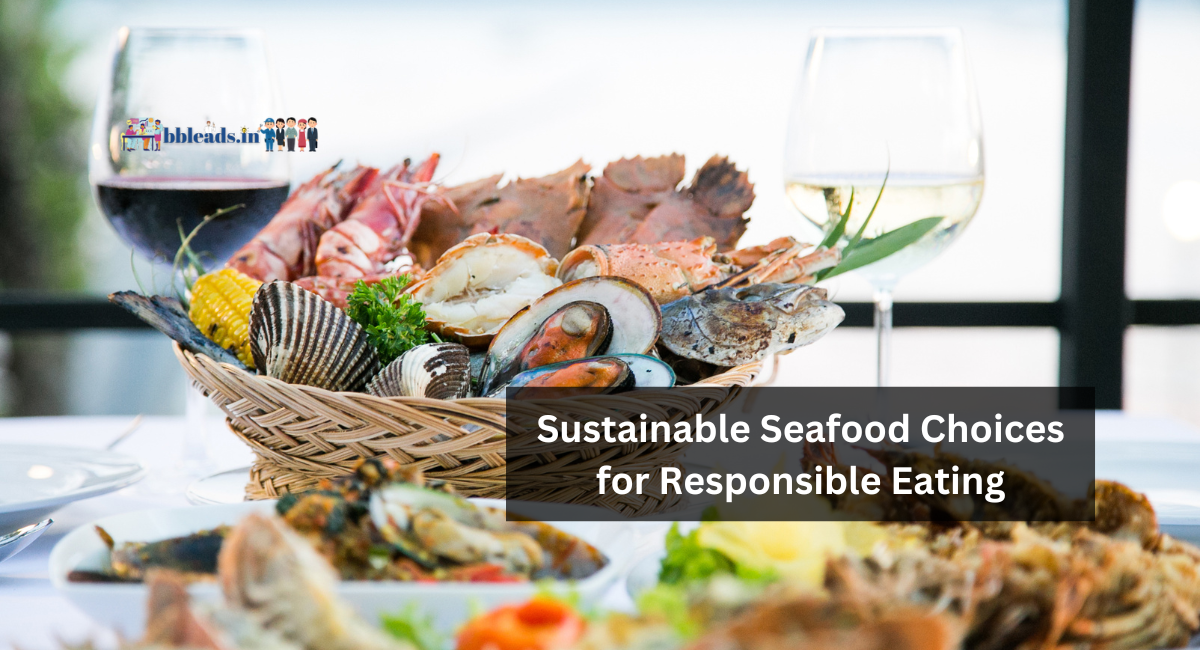In an era where environmental sustainability is a top priority, our dietary choices significantly impact our planet’s health. One of the most significant sources of impact is seafood consumption. Overfishing, destructive fishing practices, and climate change have all put tremendous strain on marine ecosystems, jeopardizing biodiversity and ocean health.
However, by making informed and responsible seafood choices, we can help to preserve these valuable resources. This article discusses sustainable seafood options and advises eating responsibly while enjoying the sea’s bounty.
What To Know About Sustainable Seafood?
Sustainable seafood entails catching or farming fish and shellfish in a manner that prioritizes environmental preservation and conservation of marine resources. This approach is crucial for ensuring a continued abundance of seafood for consumption in the future.
By adhering to sustainable seafood practices, the integrity of ocean ecosystems is safeguarded, guaranteeing the long-term availability of seafood for human consumption. Critical considerations for sustainable seafood include.
Avoiding Overfished Species
Overfishing happens when we catch fish too quickly for them to make more fish. It’s essential to avoid fishing for types of fish that are already being seen too much or are not growing in numbers so we can keep our fishing industry healthy.
Supporting Responsible Fishing Methods
Certain fishing methods have the potential to significantly harm marine habitats and result in the unintentional capture of non-target species, commonly referred to as bycatch. Implementing sustainable practices helps to reduce these negative effects.
Promoting Aquaculture Practices
Sustainable aquaculture, commonly called fish farming, involves farming practices that emphasize environmental conservation, efficient resource utilization, and the production of nutritious food while addressing the challenges associated with overfishing.
Tips For Choosing Sustainable Seafood
1. Search For Certified Labels
A straightforward way to ensure you buy sustainable seafood is to check for labels. These labels show that the seafood was sourced responsibly.
2. Refer To Sustainable Seafood Guides
Many groups give out guides that show how sustainable different types of seafood are. One example is the Monterey Bay Aquarium’s Seafood Watch program, which has a helpful guide for people to make intelligent choices.
3. Understand Your Seafood
Learn about common types of seafood and whether they are sustainable. Some fish, like Atlantic cod and bluefin tuna, are often caught too much, while others, like Pacific sardines and Alaskan salmon, are better environmental options.
4. Select Regional And Timely Seafood
Choosing seafood from nearby sources currently being caught can help the environment by reducing the need for long-distance transportation. It also means you are supporting local fishing industries that are careful about how they catch fish.
5. Inquire
When you eat out or buy seafood, ask where it comes from and how it was caught or farmed. Places that care about the environment will usually be honest about where they get their seafood.
Examples Of Sustainable Seafood Choices
1. Alaskan Salmon
Alaskan salmon exemplifies a sustainable seafood option. Alaska maintains strict regulations and management practices to uphold the health and abundance of salmon populations.
2. Pacific Sardines
Pacific sardines demonstrate rapid reproductive capabilities and resilience in the face of fishing pressures, rendering them a viable, sustainable option. Furthermore, they boast high omega-3 fatty acids and other crucial nutrients.
3. Farmed Shellfish
Shellfish such as mussels, clams, and oysters are frequently cultivated using environmentally sustainable methods. Furthermore, these shellfish have the potential to enhance the ecosystems in which they are cultivated through their ability to filter water and improve overall water quality.
4. Pole-Caught Albacore Tuna
Albacore tuna caught using pole-and-line methods generally exhibit lower bycatch rates and have a reduced impact on marine habitats than those caught using large nets.
5. Tilapia And Catfish
These freshwater fish are frequently cultivated sustainably in the United States and other regions. They necessitate fewer resources for production and exhibit a lower environmental footprint than numerous other seafood varieties.
Role Of Consumers In Promoting Sustainability
As shoppers, we can help make the seafood market more sustainable. Here are some ways we can make a difference.
1. Promote Eco-Friendly Companies
Select brands and retailers that prioritize sustainability. Numerous companies are dedicated to sourcing seafood responsibly and promoting sustainable fishing practices.
2. Minimize Seafood Waste
Minimizing waste is an essential component of promoting sustainability. To effectively reduce food waste, it is recommended to carefully plan meals, ensure proper storage of seafood, and utilize leftovers creatively.
3. Advocate For Change
Spread the word about why choosing sustainable seafood is important and encourage rules that promote responsible fishing and fish farming. Talking with people you know, like your friends, family, and government leaders, can help make a difference.
4. Learn
It is essential to remain knowledgeable about the most recent advancements in sustainable seafood and to disseminate this information to others. Education plays a crucial role in advocating for conscientious consumption practices.
Picking sustainable seafood is essential for saving the oceans and making sure we have enough fish in the future. By learning more about what we eat, supporting good practices, and asking for change, we can have yummy and healthy seafood while caring for the Earth.
Choosing sustainable seafood is more than just a fad; it’s about being responsible and eco-friendly with our food choices. Let’s do something now to protect our oceans for the next generations.
Thank you for reading the article……
